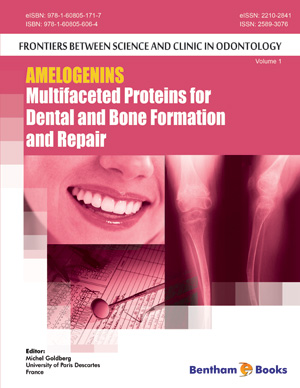Abstract
Exons 8 and 9 are two novel exons found in several transcripts of rodent amelogenin gene. These transcripts result from alternative splicing, in which exon 7 is replaced by exons 8 and 9, and they add a unique 3' terminus to amelogenin isoforms. Therefore, the alternatively spliced amelogenins end either at exon 7, encoding a single aspartic acid, or at exons 8 and 9, coding for 14 amino acids. So far, a total of seven alternatively spliced amelogenin mRNAs ending at exons 8 and 9 have been identified in rodents. The formation of these two exons results from a duplication of a DNA region containing exon 5, followed by its translocation dowstream exon 7. This event occurred during evolution of the rodent lineage at a period that postdates the divergence of the squirrel lineage, around 50 millions years ago. Therefore, exon 8 is homolog to exon 5. The amelogenins carrying the region encoded by exons 8 and 9 locate not only in ameloblasts and the enamel matrix but also in odontoblasts and dentin. The replacement of exon 7 by exons 8 and 9 leads to an additional hydrophilic domain, the function of which is not known, but may in part be related to the uniquely different rod and interrod structure seen in rodent enamel as compared to human enamel. The function of the amelogenins with exons 8 and 9 terminal peptides has been preliminarily investigated. They were found to enhance the proliferation of mesenchymal cells.
Keywords: Tooth Enamel, Amelogenin, mRNA Alternative Splicing, Novel Exons






















